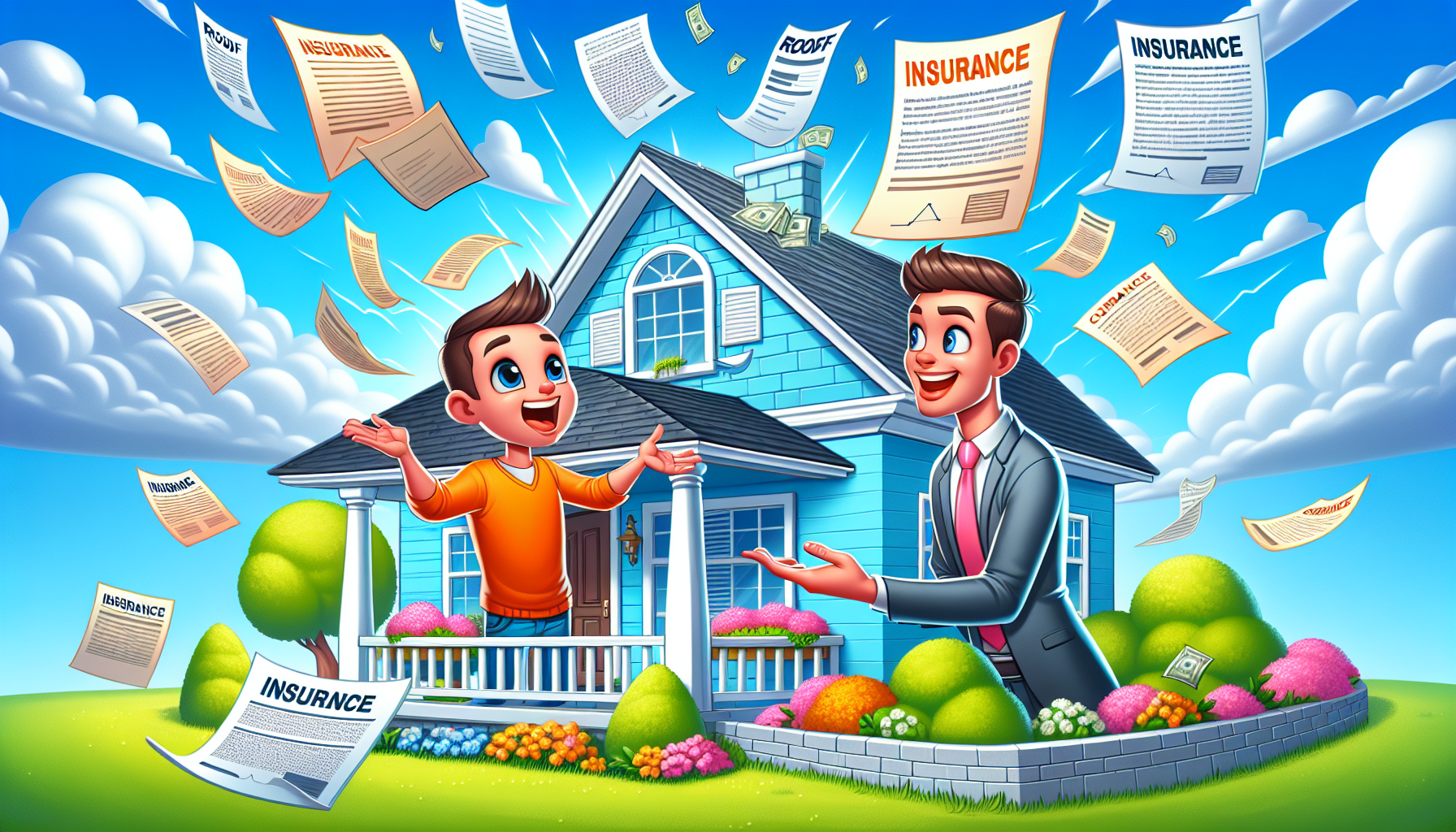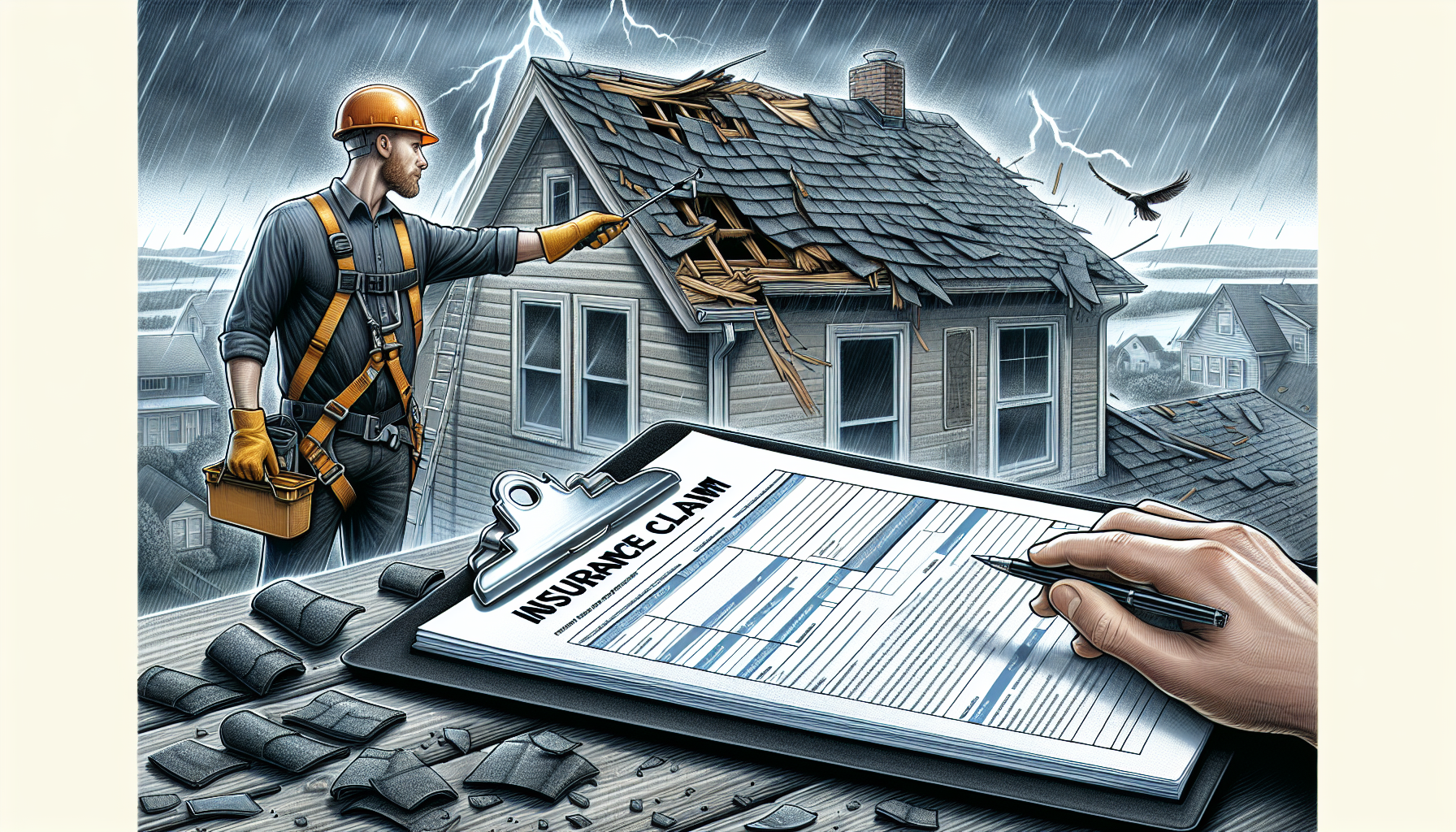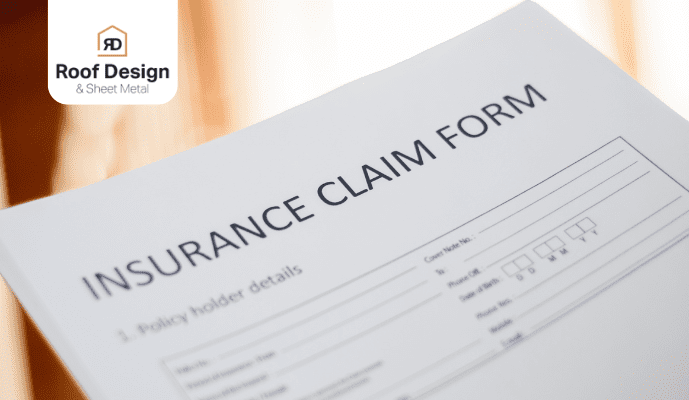Insurance Provides coverage for roof replacement when the damage stems from unexpected occurrences such as storms or fires, rather than gradual wear and tear. This blog will explain the specific circumstances under which insurance will cover a roof.
Understanding Roof Insurance Coverage

When it comes to evaluating roof damage claims, insurers take into account various aspects like the nature of the covered event that caused the damage, both the age and condition of your roof at the time of loss, assessments made by their appointed adjusters, along with calculating on actual cash value terms. Familiarity with these points can bolster one’s chances when filing for an accepted claim.
Understanding what is included within your homeowners’ coverage allows you to set realistic expectations about how best to approach potential issues or making a claim — laying out the groundwork necessary for efficient management regarding any situation involving possible compensation from an insurer.
Exclusions in Roof Insurance Policies
It’s equally important to be aware of what is not covered by your homeowners insurance policy as it is to know what’s included. Frequently, this type of insurance will not cover cosmetic damage or general wear and tear on a roof due to extended exposure to natural elements. Thus, if you have an older roof or haven’t been keeping up with its maintenance, any repair or replacement costs might fall squarely on your shoulders.
By understanding these particular exclusions within their homeowners insurance policies, individuals set themselves up with realistic expectations regarding claims. It underscores the necessity for proactive measures when caring for one’s roof so as to fully benefit from their available insurance coverage options.
Assessing Roof Damage for Insurance Claims

In the aftermath of a storm, it is critical to evaluate any damage to your roof. Search for indications such as shingles that are missing, granules that have been stripped away by high winds, or debris from trees that may have fallen during the event. Should you come across leaks or additional evidence of harm inflicted upon your home, do not delay in reaching out to your homeowners insurance provider.
Documenting Roof Damage
It is essential to meticulously document any damage to your roof in order to validate your insurance claims effectively. Photograph the damaged areas comprehensively, using both close-up images and broader views that highlight all aspects of the deterioration. Accumulate estimates for repairs as well as a detailed inspection report, these will serve as important supporting documents for your claim submission. Make sure you keep thorough notes during each inspection. These records can offer definitive evidence of the damages when assessed by an insurance adjuster.
Getting a Professional Roof Inspection
It is crucial to have a thorough roof inspection conducted by Roof Design Naples in order to detect any harm that may not be immediately apparent. This detailed examination can significantly boost the likelihood of your insurance claim being accepted. Arranging for an assessment of your roof as soon as possible after a storm occurs provides your insurance company with prompt and pertinent records.
Filing a Roof Insurance Claim

Initiating a roof repair insurance claim can be done through various channels such as contacting an insurance agent, by phone, online, or through a mobile application. It is essential to follow the set procedure precisely to make sure that your insurance company covers the cost of your roof replacement. Neglecting the correct protocol may result in your claim being rejected.
Once your roofing claim gets the green light from your insurer, they will assess and establish what it would cost for replacing your roof before issuing funds needed to commence repairs. After completion and satisfactory inspection of the new installation by an adjuster, you’ll receive the remainder of the payment due under this settlement.
Factors That Affect Insurance Coverage
The decision of your insurance company to cover roof replacement can be impacted by various elements. Key among these are the exclusions detailed in your policy, which often include lack of proper maintenance or neglect and opting for premium materials that exceed what is ordinarily covered. Being well-versed with these policy details ensures you keep up appropriate roof care and dodge unforeseen expenses.
Roof Age and Condition
Insurance providers take the age and state of your roof into serious consideration when offering insurance coverage. Roofs that have surpassed 20 years typically require an inspection for condition verification before insurance companies agree to provide coverage. It’s common for insurers to decline covering roofs over the age of 20 to 25, or they might opt not to offer coverage at all or may demand extra stipulations if they consider the roof excessively old.
Previous Claims History
The history of your insurance claims can have a considerable effect on both your present and prospective insurance coverage. If an insurance claim is denied, it will be recorded in your claims history, which might lead to higher premium costs. Having more than two claims within a five-year period could result in raised premiums. Monitoring one’s claims history frequently is vital.
To comprehend the impact on their insurance coverage and premiums, homeowners ought to examine their three- to seven-year claim histories. Being conscious of this information aids in making educated choices when submitting new claims for consideration by the insurer.
Geographic Location
The influence of geographic location on insurance coverage cannot be overstated. Roofing companies that operate locally are usually better choices due to their knowledge of regional building codes and regulations. This is particularly important in areas susceptible to natural calamities, where contractors’ understanding of local hazards assists homeowners in making knowledgeable insurance choices.
Insurance options may differ greatly depending on the region, especially in locales frequently affected by storms, hail or other types of natural disasters. Being aware of these elements is crucial for selecting an appropriate policy and a contractor who can provide sufficient protection for homeowners.
Choosing a Trustworthy Contractor

Opting for a reputable roofing contractor guarantees expert and superior service. It is crucial that homeowners entrust their new roof installation or repair to a company that possesses the proper licensing, bonding, and insurance coverage. Verifying credentials through reading customer reviews, seeking personal recommendations, and consulting with the Better Business Bureau are vital steps in this process.
To prevent falling victim to fraudulent roofing contractors, it’s advisable for homeowners to solicit several quotations from established local roofers rather than hastily committing to agreements with door-to-door salespeople. Vigilance is particularly important in regard to “storm chasers,” who typically emerge as deceitful operators proposing expedited roof repairs following severe weather events.
Summary
Navigating the intricacies of roof replacement coverage through insurance requires attention to detail regarding your policy’s specific stipulations, any exclusions it might have, the age of your roof, and your history with previous insurance claims. It is essential for a successful claim that you meticulously assess and record any damage to your roof and employ professional inspections. Choosing a reputable contractor aware of local environmental factors can increase the likelihood of having an insurance claim approved for getting your roof replaced.

